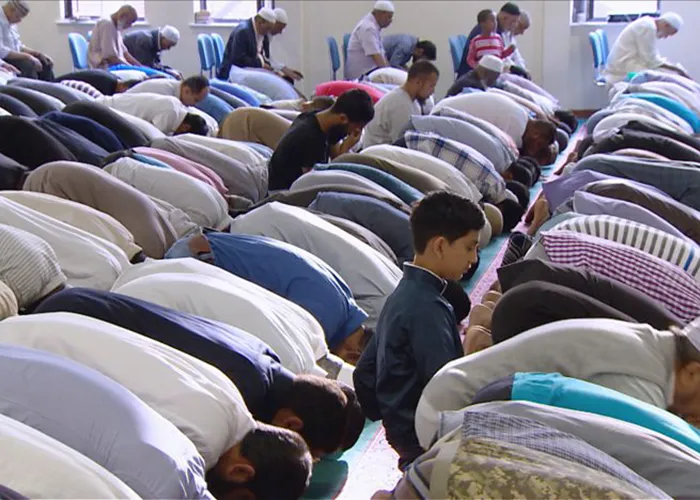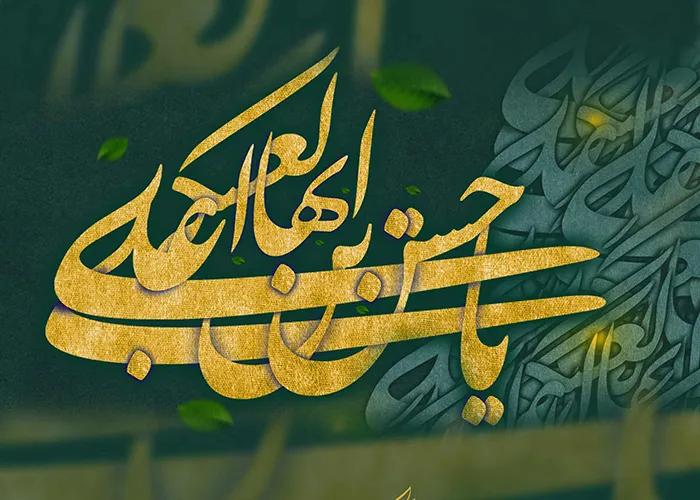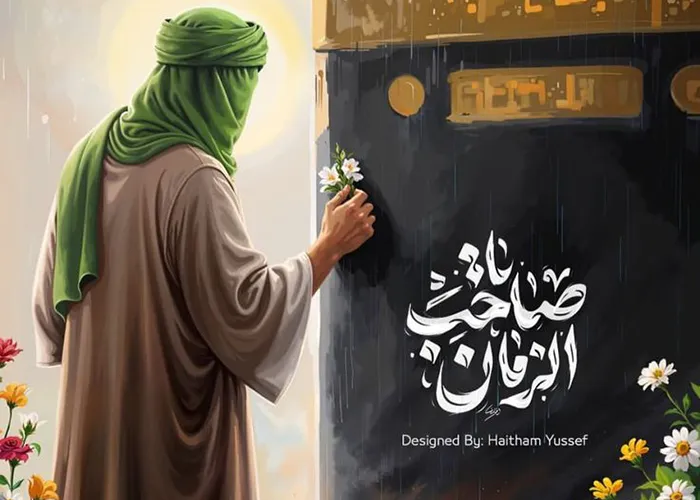Topic of the Week – Volume02 Issue26
Ashura: The Reforging of Religious Identity Through Mourning Observances and an Analysis of Imam Hussein’s (PBUH) Philosophical Framework
Seyed Hashem Moosavi
Introduction
Muharram marks the inception of Shi’a grief-a month that echoes the monumental tragedy of Karbala: an event that transfigured the course of Islamic history, becoming a defining axis for reinterpreting faith’s foundational tenets and reviving divine values. Though confined to a specific time and place, the resonance of Muharram’s lessons transcends centuries, continually stirring the conscience of free-spirited humanity.
This month offers an unparalleled opportunity to revisit an epic that transcends mere historical occurrence; it is a guiding light and a blueprint for eternal human felicity. The grand epic of Karbala was a profoundly reformative, consciousness-awakening movement, rooted in timeless principles.
As we stand at the threshold of this sacred month, this article elucidates the philosophical foundations underpinning the uprising of Sayyid al-Shuhadā (Commander of the Martyrs), Imam Hussein (PBUH), during Ashura. Furthermore, it examines the outcomes of upholding mourning rites for him-a deliberate endeavour to immortalize his ideals and perpetuate Ashura’s cultural presence within society.
Chapter One: The Foundational Principles of Imam Hussein’s (PBUH) Philosophical Framework and the Measure of Its Reverence
Imam Hussein’s (PBUH) movement was established upon an unwavering foundation of guiding principles-each a stepping stone toward eternal felicity.
To examine the substance of Imam Hussein’s (PBUH) intellectual framework, we must meticulously study the documented legacy he left: letters, sermons, discourses, and prayers that trace his sacred mission throughout his Imamate. Within these texts-such as his letters and orations preserved for posterity-we discern the very pillars of his thought: a roadmap to transcendent guidance. Understanding these principles resonates with humanity’s innate nature, compelling allegiance to the Imam and cementing the timeless reverence for his vision.
- Absolute Rejection of Oppression and Subjugation
The most fundamental principle in Imam Hussein’s (PBUH) teachings is the repudiation of false dominion and injustice-the true pillar of his uprising. He repeatedly emphasized his quest to revive principles and divine values endangered under Umayyad rule. All his messages, sermons, and letters centred on demanding justice, combating corruption, and unyielding resistance to tyranny. In his famed will to his brother Muhammad al-Hanafiyyah, he declared:
إِنّی لَمْ أَخرُجْ أَشِراً و لا بَطِراً و لا مُفْسِداً و لا ظالِماً، إِنَّما خَرجْتُ لِطَلَبِ إلاصلاحِ فی أُمَّةِ جَدّی
“I have not risen out of arrogance, hedonism, sedition, or oppression. I rise solely to enact reformation (iṣlāḥ) in the community of my Grandfather [the Prophet].”
He named his objectives: reviving the forsaken traditions of the Prophet (PBUH), establishing justice, securing the oppressed, and upholding divine boundaries.
In a sermon to his companions and Ḥurr’s army, he echoed the Noble Prophet (PBUH):
من راي سلطانا جائرا مستحلا لحرام الله، ناکثا لعهد الله ….، فَلَم یغَیر عَلَیهِ بِقولٍ وَ لا فِعْلٍ، کانَ حقّاً عَلَی الله أنْ یدخِلَه مُدخَلَه
“Whoever witnesses an unjust ruler violating God’s sanctities, breaking His covenant… yet does not oppose him by word or deed-God has decreed that such a person shall share the ruler’s fate.”
Silence before a tyrant who desecrates divine law, he warned, is complicity inviting divine retribution.
- Upholding Human Dignity and Nobility
For Imam Hussein (PBUH), an honourable death far surpassed a life of degradation under oppression. At Dhū Ḥusum, he proclaimed:
فانّی لا اری الموت الّا سعادةً و لا الحیاة مع الظّالمین الّا برما
“I see death as nothing but felicity, and life with oppressors as nothing but wretchedness.”
When Ibn Ziyād offered him the choice between pledging allegiance (humiliation) or martyrdom, he thundered: “Know well, people! This foul-born son of obscenity forces me to choose between the sword and disgrace-but disgrace is alien to us!”
He deemed this dignity not his duty alone, but every believer’s:
ألا ترون انّ الحقّ لا يُعمَل به و انّ الباطل لا يتناهي عنه فليرغب المؤمن الي لقاء ربّه حقّاً
“Do you not see truth abandoned and falsehood unrestrained? Then let the faithful yearn to meet their Lord!”
- Counsel, Guidance, and Invitation to Truth
Guidance was the essence of Imam Hussein’s (PBUH) mission-a movement awakening souls, especially those deluded by false idols. Contrary to notions of warmongering, he never initiated battle, striving until the final moment to deter enemies through admonition. When Ḥurr’s army was vulnerable, Zuhayr ibn al-Qayn urged him: “O Son of God’s Messenger! Fighting them now is easier than facing those who follow!” The Imam replied: “I will not strike first.”
He then counselled them, revealed his identity, and warned of Judgment Day. Even in battle, he defended more than attacked, sparing lives where possible. His hope was their redemption, not their ruin. Repeatedly-before and during combat-he entreated the enemy to abandon error and embrace truth. Thus, Ashura was a bastion of truth, not mere combat; Imam Hussein (PBUH), a guiding reformer.
Imam al-Ṣādiq (PBUH) encapsulates this in Ziyārat al-Arbaʿīn:
فَأَعْذَرَ فِي الدُّعَاءِ وَ مَنَحَ النُّصْحَ وَ بَذَلَ مُهجَتَهُ فيكَ لِيَستَنقِذَ عِبادَكَ مِنَ الجَهالَةِ وَحَيرَةِ الضَّلالَةِ
“[Hussein] exhausted all pleas in summoning [to truth], bestowed counsel with compassion, and sacrificed his pure blood for You, O God-to deliver Your servants from ignorance, bewilderment, and misguidance.”
The Imam (PBUH) simplified truth for those unable to grasp complex arguments:
“O people! Am I not your Prophet’s son? Have you not heard him declare of my brother and me: ‘Ḥasan and Ḥussein are the princes of the youth of Paradise’? If you doubt me, ask Anas ibn Mālik or Zayd ibn Arqam!”
Every word of enlightenment-months before Ashura or on its day-aimed to affirm delivering even one soul from misguidance matters profoundly and must never be neglected.
Chapter Two: The Results and Effects of Holding Mourning Ceremonies for the Master of Martyrs (PBUH)
Mourning for Imam Hussain (PBUH) is not merely an expression of emotion; rather, it is an act of worship with profound social and individual functions that guarantee the spiritual life of both society and the individual.
- Social Functions:
- Revival of Islamic Values:Mourning for the Master of Martyrs (PBUH) provides a platform for reviving religious values. It breathes fresh life into teachings such as self-sacrifice, devotion, seeking martyrdom, enjoining good and forbidding evil, steadfastness, loyalty, seeking justice, reliance on God (Tawakkul), and observance of divine obligations. These are the very values for whose revival Imam Hussain (PBUH) rose up and was martyred.
- Remembrance of Oppression and Sacrifice:Mourning ceremonies keep alive the memory of the oppression endured by the Imam and his Household (PBUT) and their companions, as well as their unparalleled sacrifice in the path of truth and justice. This remembrance strengthens the spirit of resistance and fighting oppression within society.
- Strengthening Unity and Solidarity:The massive gatherings of mourners provide a unique opportunity for Muslims to assemble, empathize, and unite. These gatherings fortify the bonds of Islamic brotherhood and fraternity. Collective participation in mourning assemblies strengthens social ties among Muslims and serves as a cultural asset in confronting the intellectual and social crises faced by Muslim societies, particularly migrant Muslim communities.
- Promotion of Ethics and Humanity:Given the profound ethical and human teachings of the Event of Karbala (such as the self-sacrifice of Hazrat Abbas, the patience of Hazrat Zainab, the loyalty of the companions, etc.), mourning promotes lofty human values like self-sacrifice, the pursuit of justice, fighting oppression, and preserving human dignity.
- Education and Transmission of Ashura Culture:Mourning assemblies are the most important opportunity for educating new generations and transmitting the rich culture of Ashura and its eternal lessons to posterity. This ensures the continuity and dynamism of this life-giving culture throughout history. Imam Reza (PBUH) said to one of his companions in this regard: “O son of Shabib! If you wish to gain the reward of those martyred with Hussain, then whenever you remember him, say: ‘Would that I had been with them! Then I would have achieved a great success.‘” According to this hadith, a Shi’a and follower of Imam Hussain (PBUH) strives, by recalling the Event of Karbala and learning from the culture of Ashura, to position himself alongside the martyrs of Karbala and align himself with them.
- Individual Functions:
- Attaining Nearness to God (Taqarrub):Mourning for Imam Hussain (PBUH)is an act of worship beloved to the Divine Court. Imam Sadiq (PBUH)said:
كُلُّ الْجَزَعِ وَالْبُكَاءِ مَكْرُوهٌ، سِوَى الْجَزَعِ وَالْبُكَاءِ عَلَى الْحُسَيْنِ بْنِ عَلِيٍّ عَلَيْهِمَا السَّلَامُ فَإِنَّهُ فِيهِ مَأْجُورٌ
“All lamentation and weeping is disliked, except lamentation and weeping for Hussain ibn Ali (Peace Be Upon Them), for indeed in it there is reward.”
Furthermore, Imam Reza (PBUH)stated:
مَنْ جَلَسَ مَجلساً يُحيى فيه أمرُنا لم يَمُتْ قلبه يومَ تَمُوتُ القلوبُ
“Whoever sits in an assembly in which our matter (Wilayah and our remembrance) is revived, his heart will not die on the Day when hearts die.”
This revival of the matter of the Ahl al-Bayt (PBUT) brings about spiritual life for the heart and nearness to God.
- Immense Reward and Recompense:Numerous narrations emphasize the extraordinary reward for mourning Imam Hussain (PBUH). Imam Baqir (PBUH)said:
أَيُّمَا مُؤْمِنٍ دَمَعَتْ عَيْنَاهُ لِقَتْلِ الْحُسَيْنِ عَلَيْهِ السَّلَامُ دَمْعَةً حَتَّى تَسِيلَ عَلَى خَدِّهِ بَوَّأَهُ اللَّهُ بِهَا غُرَفاً فِي الْجَنَّةِ
يَسْكُنُهَا أَحْقَابا
“Any believer whose eyes shed a tear for the killing of Hussain (PBUH)until it flows down his cheek, God will settle him in chambers in Paradise for long eras (Ahqab) because of it.”
- Attaining the Rank of the Martyrs of Karbala:Imam Reza (PBUH)said to Rayyan ibn Shabib:
يَا ابْنَ شَبِيبٍ إِنْ سَرَّكَ أَنْ تَكُونَ لَكَ مِنَ الثَّوَابِ مِثْلَ مَا لِمَنِ اسْتُشْهِدَ مَعَ الْحُسَيْنِ عَلَيْهِ السَّلَامُ فَقُلْ مَتَى مَا
ذَكَرْتَهُ: يَا لَيْتَنِي كُنْتُ مَعَهُمْ فَأَفُوزَ فَوْزاً عَظِيماً؛
“O son of Shabib! If you wish to have reward like the reward of those martyred with Hussain (Peace Be Upon Him), then whenever you remember him, say: ‘Would that I had been with them! Then I would have achieved a great success.‘”
This hadith indicates that mourning with sincere intention places a person on the path and in the spirit of the martyrs of Karbala, elevating them to their rank.
Chapter Three: The Secret Behind the Emphasis on Holding Mourning Ceremonies and Reciting Ziyarat Ashura
Why is there such strong emphasis on the continuity of mourning, especially on reciting Ziyarat Ashura? The answer lies in two key points:
- Preserving the Intellectual Tradition of the Ahl al-Bayt (PBUT) and Vilifying False Ideology:The secret behind the strong recommendation to recite this Ziyarat is to establish a cultural and spiritual front. What must never be forgotten is the ideology of Yazid, not merely the person of Yazid himself.
Mourning and dissociation (Tabarra) from the enemies ensure that society remains protected from the Yazidi thought and the Yazidis of the age, even if their names and apparent graves have vanished. Just as the wife of Pharaoh was not only saved from Pharaoh himself but prayed:
رَبِّ ابْنِ لِي عِندَكَ بَيْتًا فِي الْجَنَّةِ وَنَجِّنِي مِن فِرْعَوْنَ وَعَمَلِهِ وَنَجِّنِي مِنَ الْقَوْمِ الظَّالِمِينَ
“My Lord! Build for me near You a house in Paradise and save me from Pharaoh and his deeds and save me from the wrongdoing people.” (Quran 66:11).
False ideology constantly reappears in new forms, just as Imam Ali (PBUH) said about the Khawarij after the Battle of Nahrawan:
کلاّ والله إنّهم نُطَف فی أصْلاب الرجال و قرارات النساء
“No, by Allah! They are seeds (sperms) in the loins of men and wombs of women [i.e., their ideology will reappear in future generations].” Therefore, mourning and Ziyarat Ashura serve as a strategic document for the survival and transmission of the discourse of Ashura from one generation to the next, from one culture to another, and from one geography to another.
- Guaranteeing Spiritual Life Free from Oppressing Others:Another secret behind the frequent emphasis on shedding tears for Imam Hussain (PBUH) and paying attention to Ziyarat Ashura is that tears for the martyr cultivate a longing for martyrdom (shahadat). And one who seeks martyrdom is inherently distant from even the thought of oppressing or wronging others.
Conclusion:
The uprising of Imam Hussain (PBUH) in Karbala was the tangible manifestation of the eternal principles of Islam: seeking justice, cherishing freedom, upholding human dignity, striving for reform, and calling to the truth. Holding mourning ceremonies for the Master of Martyrs (PBUH) is not merely an expression of emotion; it is an essential movement to keep these life-giving principles alive, to promote human and Islamic values, to strengthen societal unity, to educate generations, to attain nearness to God, and to gain immense divine reward. The secret behind the emphasis on the continuity of mourning and reciting Ziyarat Ashura is to guarantee the survival of the true intellectual tradition and the isolation of false ideologies throughout history.
Muharram is not merely a month of grief; it is a month of learning lessons (ibrat), returning to one’s primordial nature (fitrah), renewing one’s covenant with the ideals of Hussain (PBUH), and moving on the path towards eternal felicity.
editor's pick
news via inbox
Subscribe to the newsletter.




